Get PeakVisor App
Sign In
Search by GPS coordinates
- Latitude
- ° ' ''
- Longitude
- ° ' ''
- Units of Length

Yes
Cancel
Share ×

Scan the QR code and open PeakVisor on your phone
❤ Wishlist ×
Choose
Delete
Hokkaido is the northernmost of Japan’s five main islands, home to sweeping volcanic landscapes, dozens of natural parks, and some of the deepest winter snowpacks in Asia. There are 1162 mountains in Hokkaido, the highest and most prominent of which is Mt. Asahi (旭岳, Asahi-dake) at 2,291 m (7,516ft).
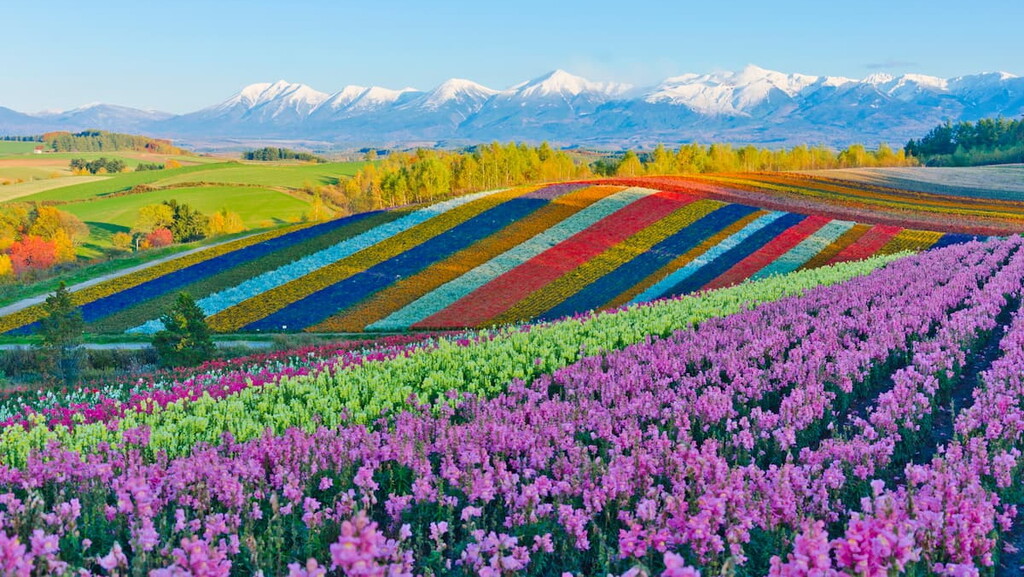
Hokkaidō (北海道) is the second-largest of Japan’s islands, located just north of the main island of Honshu across the Tsugaru Strait. It’s known for its large national parks, volcanoes, deep snowfall, and excellent seafood.
Hokkaido is located near Sakhalin Island and the Kuril Islands in eastern Russia, surrounded by the Sea of Okhotsk, the Sea of Japan, and the Pacific Ocean. The center of the island is highly mountainous, with the highest peaks found in the Daisetsuzan Volcanic Group.
Most of Hokkaido’s mountains have volcanic origins. The major ranges on the island are the Ishikari Mountains in central Hokkaido, the Hidaka Mountains at the southern tip of the island, the Mashike Mountains on the western coast, and the Kitami Mountains at the northernmost end of the island.
Many of the place names here are incomprehensible even to Japanese speakers, having originated in the language of Hokkaido’s Indigenous community, the Ainu. In addition to mountains, the island also has dense forests, plains, natural hot springs, and the largest wetland area in Japan.
Hokkaido covers about 77,800 sq. km (30,000 sq. mi) of land, roughly the size of Ireland, which makes it Japan’s largest prefecture by area. The island is home to 5.3 million people, 1.9 million of which live in Sapporo, the capital and largest city.

Hokkaido is less populated and developed than the rest of Japan, covering 20 percent of the country’s land area with only about 5 percent of its total population. About ten percent of the land here is encompassed by natural parks, including six national parks, five quasi-national parks, and 12 prefectural natural parks.
With all this open space, Hokkaido is a hiker’s paradise. There are hundreds of miles of trails on the island covering rolling hills, bamboo forests, and high alpine peaks. In addition to hiking, Hokkaido’s four defined seasons and varied terrain offer endless opportunities for outdoor recreation, including cycling, rafting, surfing, rock climbing, and skiing.
Long winters and deep snowfall mean winter sports are particularly important in Hokkaido. There are over 100 ski resorts on the island, and skiers and snowboarders come from all over the world to experience Hokkaido’s legendary snowfall. In fact, the capital city of Sapporo hosted the first winter Olympics ever held outside of Europe or North America in 1972.
With its many national parks and expansive wildland, Hokkaido is one of the leading outdoor destinations in Japan. Other notable mountain areas in Japan include the Akaishi, Hida, and Kiso mountains on Honshu island, which together form the Japanese Alps.
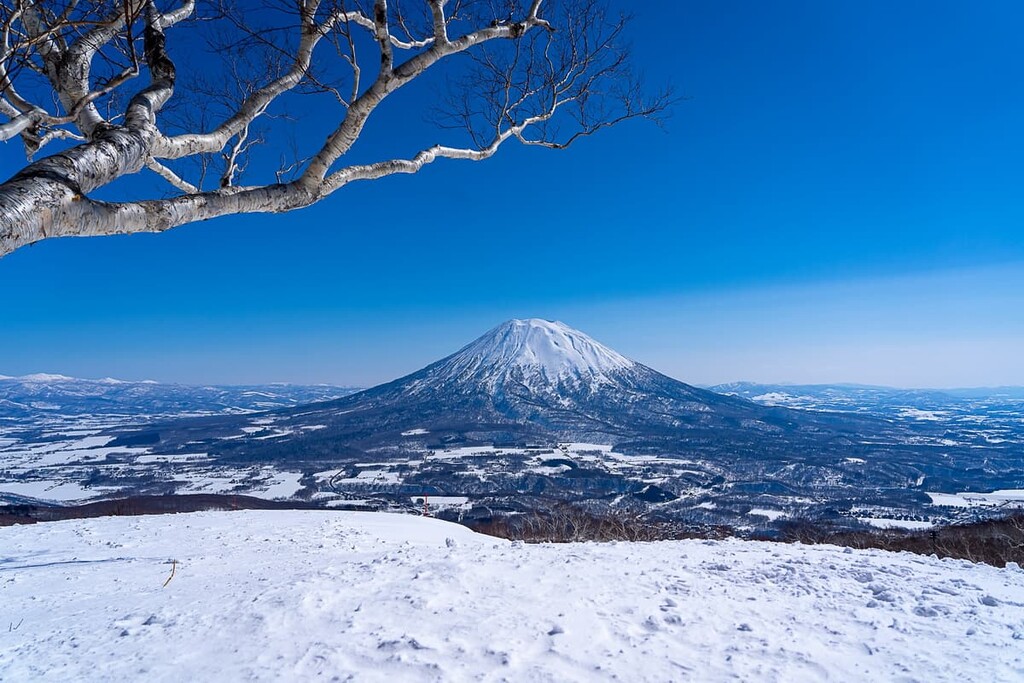
If you’re looking for even more adventure opportunities, check out the 100 Famous Japanese Mountains, a list that covers some of the best hiking on every one of Japan’s main islands.
Japan is famous for its volcanic geology, and Hokkaido is no exception. The island is dotted with volcanoes, including at least six which are considered active.
This complex geological activity is the result of Japan’s location at the meeting point of four tectonic plates (the Eurasian, Philippine, Pacific, and Okhotsk plates). The island of Hokkaido was formed by two of these plates and their adjacent volcanic island arcs drifting together, which pushed up some of the mountain ranges on the island.
More recently, glaciers covered the area, leaving visible marks in the Hidaka Mountains. After the last glacial maximum, sea levels rose, cutting off Hokkaido from Honshu island and creating the Tsugaru strait. Hokkaido’s mountain ranges are related but each has a separate geological history.
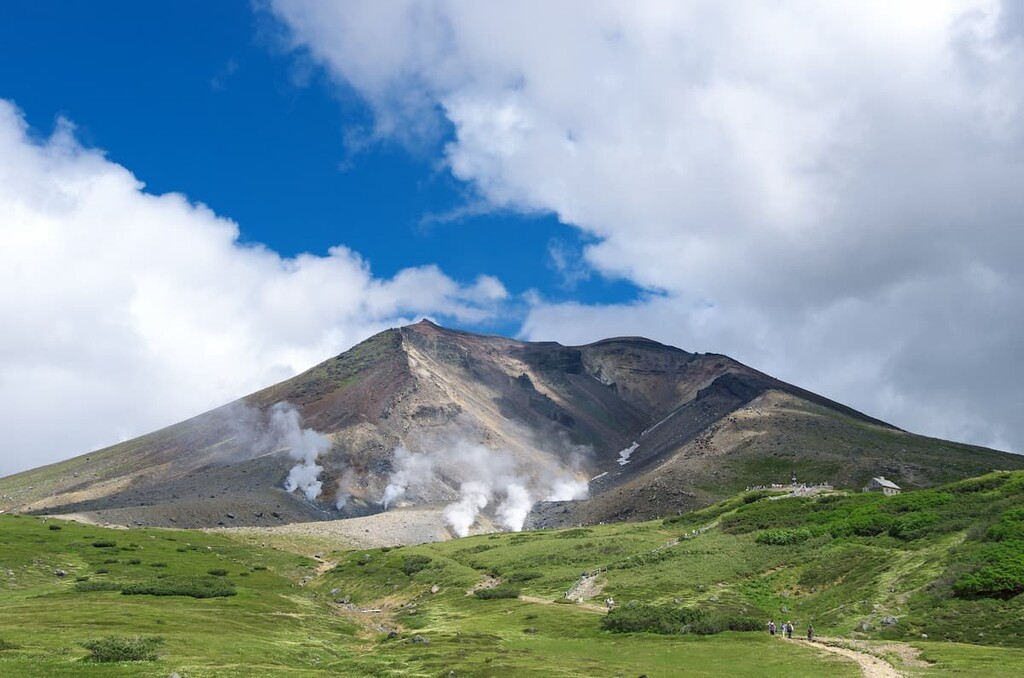
The Ishikari Mountains are the tallest and most prominent peaks in Hokkaido, forming the volcanic core of the island. The range, which averages over 2,000 meters (6,500 ft) in elevation, contains 137 named peaks.
The Ishikari Mountains consist of the Daisetsuzan and Tomuraushi volcanic groups. Most of the range is encompassed by Daisetsuzan National Park, Hokkaido’s largest national park.
The highest point in the Ishikari Mountains is Mt. Asahi (旭岳, Asahi-dake), the tallest mountain in all of Hokkaido. Mt. Asahi is known as Kamui-mintara, which means "the playground of the gods” in the language of the Ainu people, the Indigenous community of Hokkaido.

In addition to being the tallest peak in Hokkaido, Mt. Asahi is also one of the most popular hiking destinations on the island. There’s a ropeway on the mountain that allows hikers to reach the summit quickly and easily. In winter, the ropeway brings skiers and snowboarders to some of the deepest powder snow on the island.

The Hidaka Mountains (日高山脈, Hidaka-sanmyaku) are a chain of 70 peaks known as “the Hokkaido Backbone.” They form a spine that stretches north from the southern tip of the island into the interior. The tallest mountain in the range is Mt. Poroshiri (幌尻岳, Poroshiri-dake).
The Hidaka Mountains are a relatively young range, having formed during the late Quaternary period. The mountains were created by the collision of the Northeast Japan Arc and the Kuril Arc, two volcanic island chains along the tectonic boundaries around Japan.
The range averages between 1,500 and 2,000 meters (4,900 to 6,500 ft) in elevation. While they’re not the tallest mountains in Hokkaido, they’re the only ones on the island that show signs of glaciation. There are about 20 glacial cirques scattered throughout the range.
Most of the Hidaka Mountains are protected by the Hidaka-sanmyaku Erimo Quasi-National Park. The mountains are an important brown bear habitat, and they’re home to a number of unique wildflowers only found in Hokkaido.
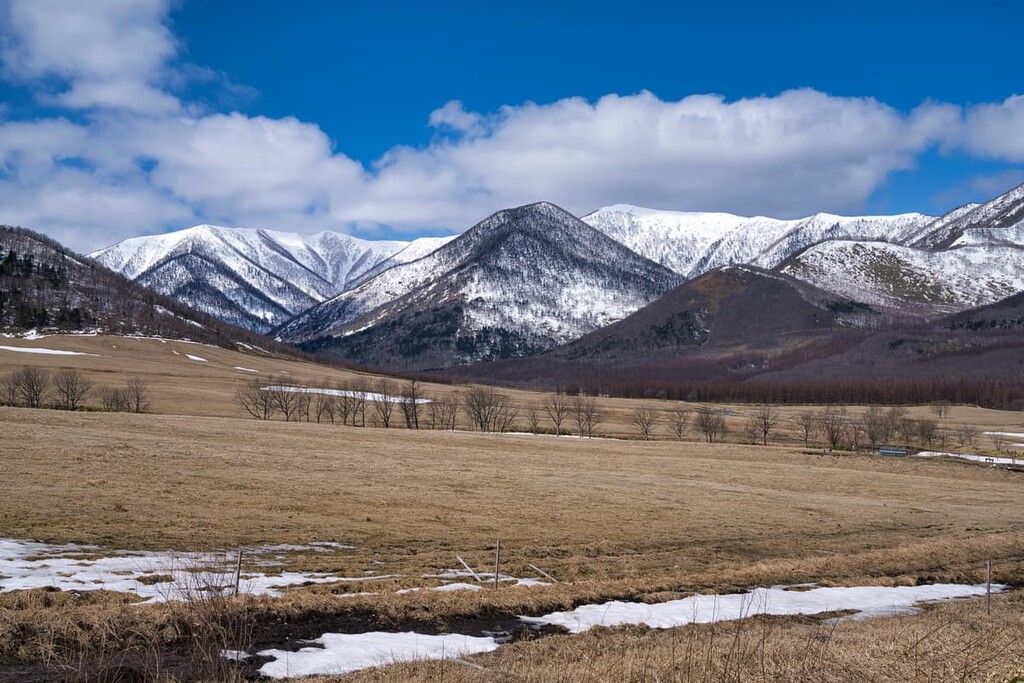
The Kitami Mountains are some of the wildest and most remote in all of Japan, lying at the northernmost edge of Hokkaido. The range, which runs for about 290 km (180 miles), contains 94 named peaks. The highest is Mt. Teisho (天塩岳, Teshio-dake) and the most prominent is Mt. Hako (函岳, Hako-dake). The range is considered one of the least developed areas in Hokkaido.
As one of the northernmost points in Japan, the Kitami Mountains lie directly across from the Russian Kuril Islands. (The four southernmost islands are administered by Russia, although they’re claimed by Japan in a territorial dispute). Visitors might notice more Ainu and Russian cultural elements in the area.
The Kitami Mountains are lower and less seismically active than most of Hokkaido’s other ranges. The terrain features rolling hills and wide-open valleys averaging between 750 and 950 meters (2,500 ft to 3,100 ft). Towards the southern end of the range, the mountains are higher, topping out at 1,557 meters (5,108 ft) on Mt. Teisho.
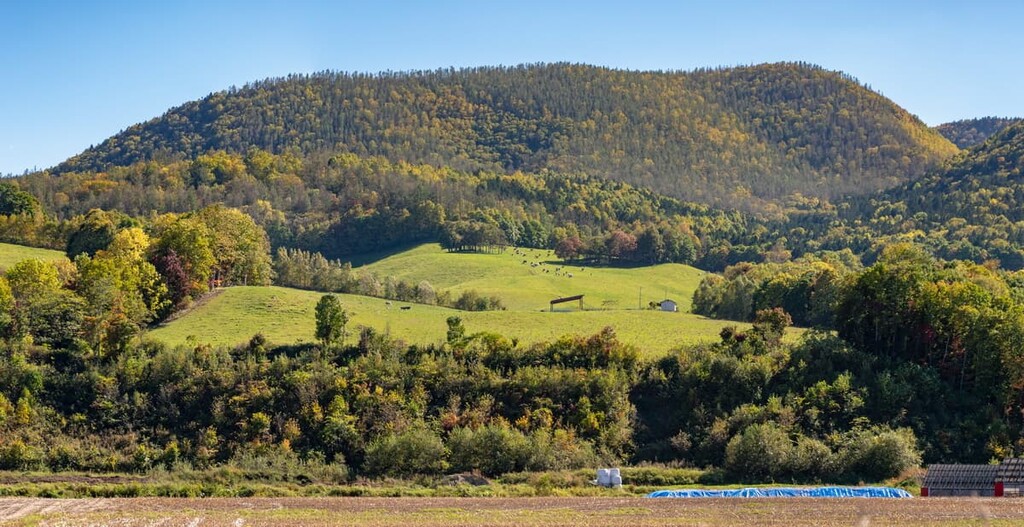
The Mashike Mountains (増毛山地, Mashike Sanchi) follow the western edge of Hokkaido, along the shore of the Sea of Japan. There are 46 named mountains in the range, the highest and most prominent of which is Mt. Shokanbetsu (暑寒別岳, Shokanbetsu-dake).
The Mashike Mountains are divided into two sections, the northern volcanic Shokanbetsu group and the southern Kabato group. Some of the peaks are visible from Sapporo. Part of the range is encompassed by the Shokanbetsu-Teuri-Yagishiri Quasi-National Park.
One unique feature of the Mashike Mountains is their low-elevation alpine areas. Mt. Shokanbetsu alone is home to over 100 types of alpine plants, although it only reaches 1,491 meters (4,891 ft) in elevation.
Visitors should be aware that while the Mashike Mountains are beautiful, they’re not known for clear weather. Proximity to the Sea of Japan gives the range the cloudy winters and abundant snowfall.
As a largely undeveloped island, Hokkaido is renowned for its abundant plant and animal life, including hundreds of wildflowers and the only brown bears in Japan.
Over 20 percent of the total forest land in Japan is located in Hokkaido, and more than half of Hokkaido’s forest land is preserved as national forest.

The island lies in a transition zone between the cool temperate forests of Japan and the subarctic forests and tundra to the north. At lower elevations, bamboo and deciduous forests featuring Japanese oak, painted maple, and birch are common. The most common coniferous trees on the island are Sakhalin fir and spruce.
One unique feature of Hokkaido’s plant life is its alpine vegetation. Alpine meadows can be found at relatively low elevations on the island, sometimes as low as 1,500 meters (4,920 ft). These areas are home to about 500 different species of alpine wildflowers that bloom throughout the summer. Many are endemic to Hokkaido and some are so rare that they’re only found on one mountain.
Some of the most famous animals in Hokkaido are Ussuri brown bears (Ursus arctos lasiotus) and the endangered red-crowned crane, the latter of which is considered a national symbol in Japan. Hokkaido is the only place in Japan with native brown bears and the island has the largest brown bear population in Asia outside of Russia.
Other notable mammals on the island include Sika deer, red foxes, Hokkaido red squirrels, and the northern pika, which supposedly inspired the Pokémon character Pikachu.

Many people come to Hokkaido for wildlife viewing, especially birdwatching. There are over 200 species of birds on the island, many of which can’t be found elsewhere in Japan. Some of these are white-tailed eagles and Steller's sea eagles, tufted puffins, and hazel grouse.
While Hokkaido is part of Japan today, it was long considered to be separate from the other main islands of Japan, and, as such, it has its own unique history.
In the prehistoric period, Japan was dominated by the people of the Jōmon culture, which flourished on the islands for over 10,000 years from about 15,000 BCE to 300 BCE.
The Jōmon period is known for its distinctive artistic style, which included jewelry, tools, and clay figurines. During this time, people lived in settled villages and survived by hunting, gathering, and some early agricultural practices.
Hokkaido was heavily occupied during this time. Over 7,000 Jōmon artifacts have been unearthed on the island, and there are six archeological sites in Hokkaido seeking UNESCO World Heritage designation.
Around 300 BCE, a new farming culture took hold in southern Japan. In Hokkaido, however, the hunter-gatherer lifestyle persisted and evolved for most of the next 2,000 years. The Ainu, the Indigenous people of Hokkaido, trace their origins to this post-Jōmon culture.
The Ainu have lived on the island that’s now known as Hokkaido for thousands of years. Their traditional territory includes parts of what is now the Tohoku region of Japan along with Sakhalin, the Kuril Islands, and parts of the Kamchatka Peninsula in modern-day Russia.
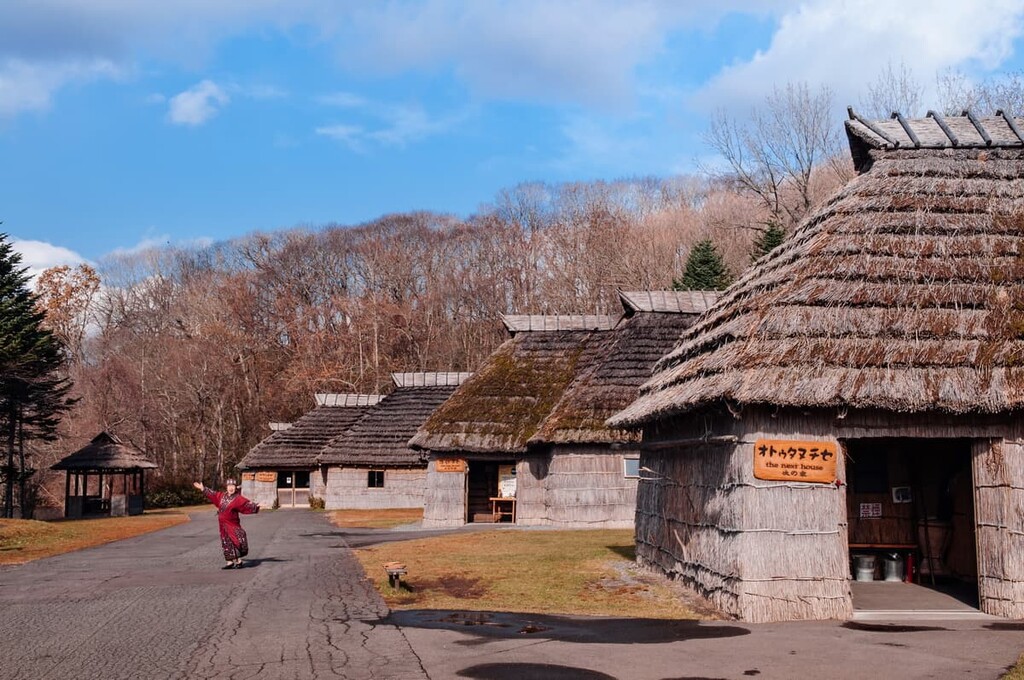
While the Ainu have long had relations with their neighbors to the south, they’re not directly related to the modern-day ethnic Japanese people and have their own language and culture.
The Ainu traditionally made their living by hunting, fishing, and gathering wild plants. They controlled Hokkaido for most of Japanese history, but over time, the ethnic Japanese began to exert greater control over the island.
Northern Japanese clans had long traded with the Ainu, exerting varying degrees of influence over the southern half of the island. Around 1800, the Japanese government began to deport Ainu men from the island and force Ainu women to marry Japanese men, pressuring them to adopt Japanese culture and language.
In 1869, the newly restored Meiji imperial government took control of the island and set about incorporating it fully into the modern state of Japan. This island, which was known as Ezo-chi at the time, was renamed Hokkaido, and the government encouraged heavy Japanese settlement in an effort to modernize and westernize the country.
The Ainu were forcibly assimilated into Japanese society. While there are somewhere between 25,000 and 200,000 estimated Ainu people in Japan today, there are only a few dozen speakers of the Ainu language left on the island. The Ainu weren’t formally recognized as an Indigenous community by the Japanese government until 2008.
Despite these challenges, the Ainu have managed to maintain their cultural identity. There’s renewed interest in Ainu culture and Ainu people today are making new music and dance along traditional lines. There are also efforts underway to revive the Ainu language.
Hokkaido people embrace the island’s famously snowy winters. There are over 100 ski resorts in Hokkaido and many cities and towns host their own winter festivals. Sapporo holds an ice and snow festival every winter that draws millions of visitors from all over the world.

Ice and snow aren’t the only major draws to the island. Seafood connoisseurs know the waters around Hokkaido are home to some of the best seafood in the world. The freezing water temperatures here necessitate thick layers of fat for sea creatures to stay warm, and the plankton-rich Oyashio ocean current provides plenty of nourishment.
This environment creates some of the most delicious crab (kani), salmon roe (ikura), and sea urchin (uni) in Japan, along with many other types of seafood. While these delicacies aren’t cheap, they’re often more affordable and fresher in Hokkaido than anywhere else in the county.
Cheese and various dairy products are another unique cuisine offering in Hokkaido. While dairy isn’t a traditional part of the Japanese diet, the government began to encourage dairy production here in the late 1800s. Today, Hokkaido’s dairy industry is the largest in Japan, and Hokkaido milk, butter, and cheese carry a reputation for excellence.
Hokkaido is a land of parks and outdoor recreation areas, with nearly 10 percent of the island covered by protected natural space. In addition to the six national parks, there are five quasi-national parks (similar in scale and natural value to the national parks, but administered by the prefecture) and 12 more prefectural natural parks that are managed by the government of Hokkaido.
Pretty much all of Hokkaido’s natural parks have good trail systems with plenty of options for day hiking. Some of the most popular day hikes include Mt. Yotei, a photogenic volcano near Niseko, Noboribetsu “Hell Valley”, which features volcanic steam vents and sulfur streams, and Mt. Rebun and Mt. Rishiri, which occupy their own islands off the northwest coast of Hokkaido.

If you’re looking for a longer trek, there are plenty of options on Hokkaido, particularly in the national parks. Unlike other parts of Japan, there are a number of minimal backcountry huts on the island. The Daisetsuzan Grand Traverse, which travels about 75 km (45 mi) through Daisetsuzan National Park past Hokkaido’s highest peak, is the premier long-distance trail on the island.
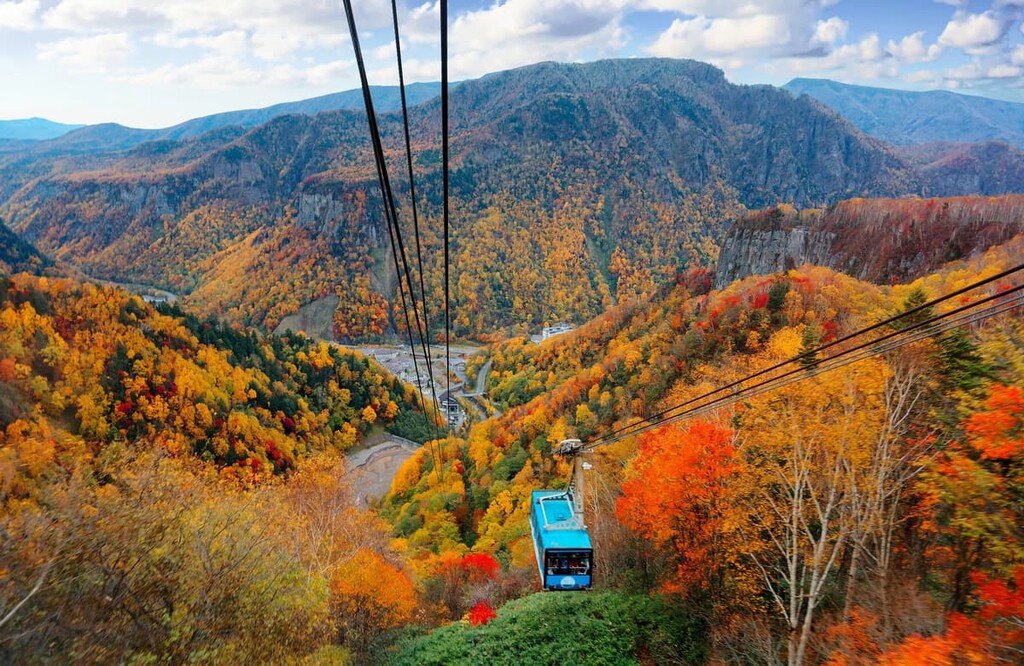
Overall, Japan is one of the safest countries in the world. In Hokkaido, you’ll want to keep a close eye on the weather, which can change quickly, and have a healthy respect for the remoteness of some of the areas here. Cold weather and even hypothermia are possible even in the summer.
The winter months present the most safety challenges. Winter temperatures regularly drop to -20°C (-4°F) without windchill. If you have a gear malfunction, it can be nearly impossible to move through the meters-deep snowpack. Snow storms can also reduce visibility to zero, making it impossible to navigate.
While avalanche danger is lower in Hokkaido than elsewhere, it’s still present here. The extreme snowpack and unusual terrain make predicting and avoiding avalanches difficult even for those with training and experience in other parts of the world. If you plan to be skiing in the backcountry, consider hiring a guide.
Public avalanche forecasting in Hokkaido is less extensive than what skiers and snowboarders might be used to. Always bring a beacon, shovel, and probe and know how to use them
While Hokkaido’s brown bears get lots of attention, hikers rarely encounter them. The bears are timid and not known to attack humans. Make some noise while traveling through forested areas (music, loud talking, or bear bells all work) and any bears will likely avoid you. Don’t leave food out and be sure to cook away from your tent to limit the likelihood for bear encounters.
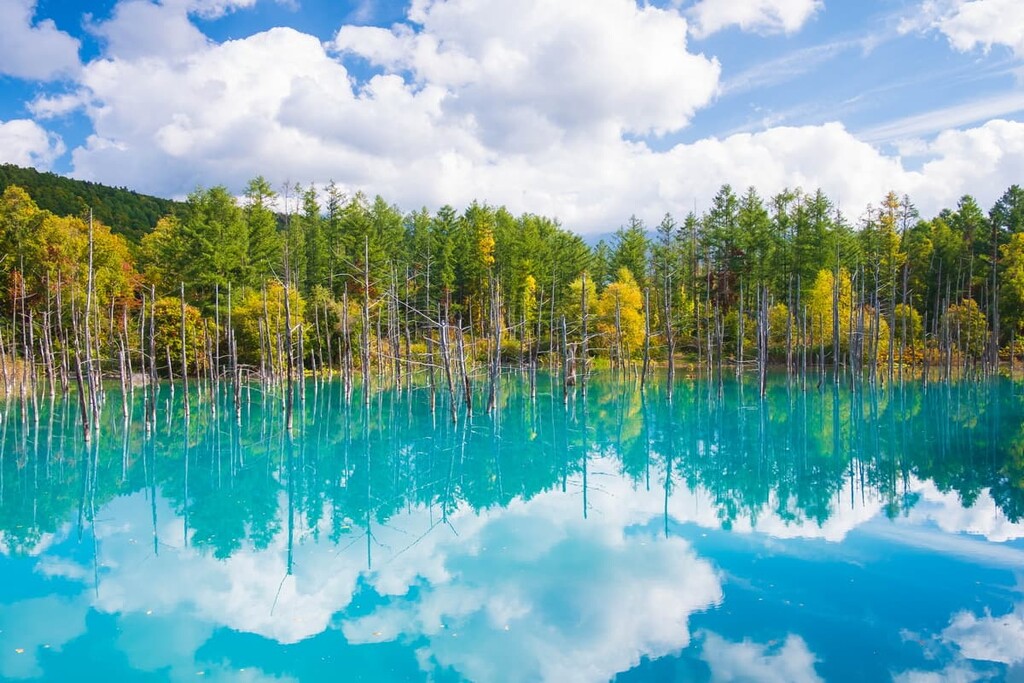
The 100 Famous Japanese Mountains list is a defining collection of Japanese peaks chosen for their special beauty, history, and uniqueness, as opposed to simply their height or location.
The list, which was first published as a book in 1964 by mountaineer Kyūya Fukada, has been a resource for Japanese peak baggers for several generations. It’s available in English as One Hundred Mountains of Japan. Hokkaido has nine mountains on the list:
Don’t forget: You can add peaks from the 100 Famous Japanese Mountains to your travel logbook during your travels in Hokkaido by checking-in at the summit of each peak in the PeakVisor app. That way, you can keep track of your peak bagging accomplishments!

Hokkaido has nearly two dozen major natural parks, but the national parks are the premier hiking destinations on the island. Here are some of the best places to check out during your travels:
Occupying the northernmost tip of Hokkaido, along with two islands off the west coast, Rishiri-Rebun-Sarobetsu National Park (利尻礼文サロベツ国立公園, Rishiri Rebun Sarobetsu Kokuritsu Kōen) stands out for its wildflowers and diverse terrain.
The park encompasses everything from beaches and sand dunes to fields of alpine flowers, low-lying moors, and the dramatic peak of volcanic Mt. Rishiri. The islands of Rishiri and Rebun are beautiful when viewed from the coastal Sarobetsu plain. Each island features classic hiking routes.

Shiretoko National Park (知床国立公園, Shiretoko Kokuritsu Kōen) is known as one of Japan’s most wild and unspoiled areas. The park occupies a largely roadless peninsula on the northeastern edge of Hokkaido, only accessible by boat or by a multi-day hike.
Some of the stand-out features of the park include a hot spring waterfall and Japan’s largest brown bear population.
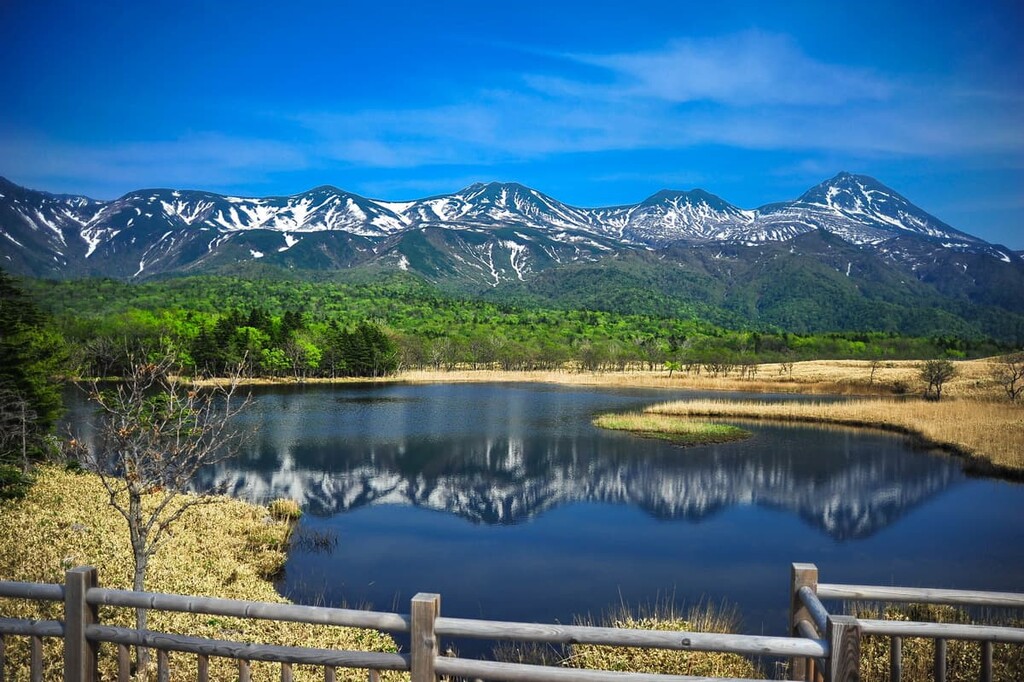
Akan Mashu National Park (阿寒摩周国立公園, Akan Mashū Kokuritsu Kōen) is one of Hokkaido’s two original national parks, dating back to 1934.
The park is known for its three beautiful lakes (Lake Mashu is the most famous) and its exceptional volcanic scenery. Mt. Meakan, the highest peak in the park, is considered one of the best places in Japan to view volcanic activity. The mountain is an active stratovolcano featuring a triple crater at the summit.

Kushiro Shitsugen National Park (釧路湿原国立公園, Kushiro-shitsugen Kokuritsu Kōen) covers the largest wetland area in Japan. The park’s main draw is its population of red-crowned cranes. The national park was created in 1987 to preserve the only year-round habitat of the endangered cranes in Japan.
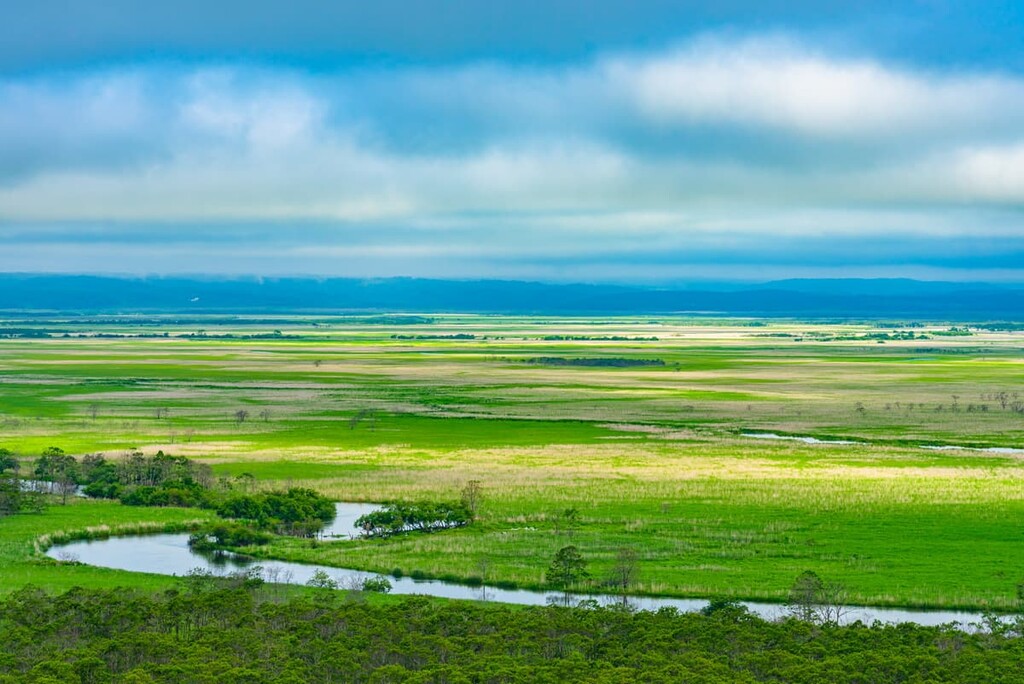
Daisetsuzan National Park (大雪山国立公園, Daisetsuzan Kokuritsu Kōen) is the largest national park in all of Japan, featuring sweeping forests and volcanic landscapes. While elevations average around 2,000 meters (6,500 ft), low treelines and abundant alpine vegetation give the mountains a high-alpine feel.
While there are many challenging hikes in Daisetsuzan National Park, Mt. Asahi features a ropeway, making the best terrain on the mountain more accessible.
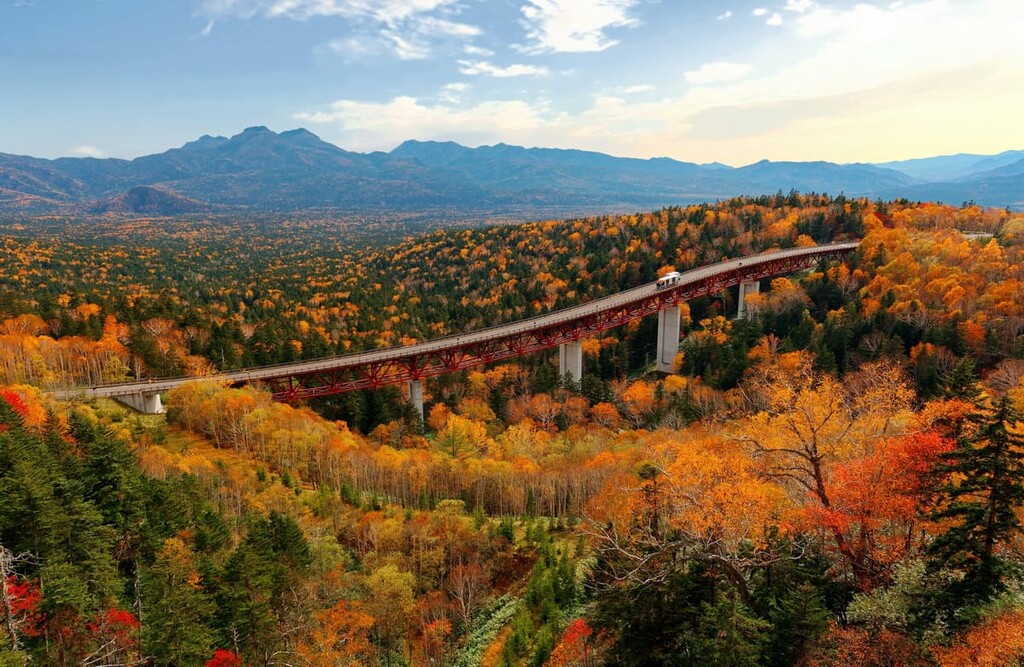
Shikotsu-Toya National Park (支笏洞爺国立公園, Shikotsu Tōya Kokuritsu Kōen) is home to Hokkiado’s most recognizable peak, Mt. Yotei. The volcano, sometimes called Ezo Fuji due to its resemblance to Mount Fuji, is a popular hiking and backcountry skiing destination.
Mt. Yotei isn’t the only volcanic attraction in the area. The park is home to the popular Noboribetsu hot springs, and it’s named for two volcanic caldera lakes, Shikotsu and Toya. This is the closest park to Sapporo and the easiest to access from the city.

To skiers and snowboarders, Hokkaido is the land of “Japow,” where ultralight, deep powder snow falls in epic quantities. The island is recognized as having some of the best snow for skiing and riding anywhere on earth, both in terms of quality and quantity.
Hokkaido is dotted with ski areas and backcountry opportunities. You can find information about these ski resorts, including real-time lift status and trail information, in the PeakVisor app.
Niseko United is the largest ski resort in Hokkaido and a major international destination, with four ski mountains. Grand Hirafu is the largest and most well-known of the four.
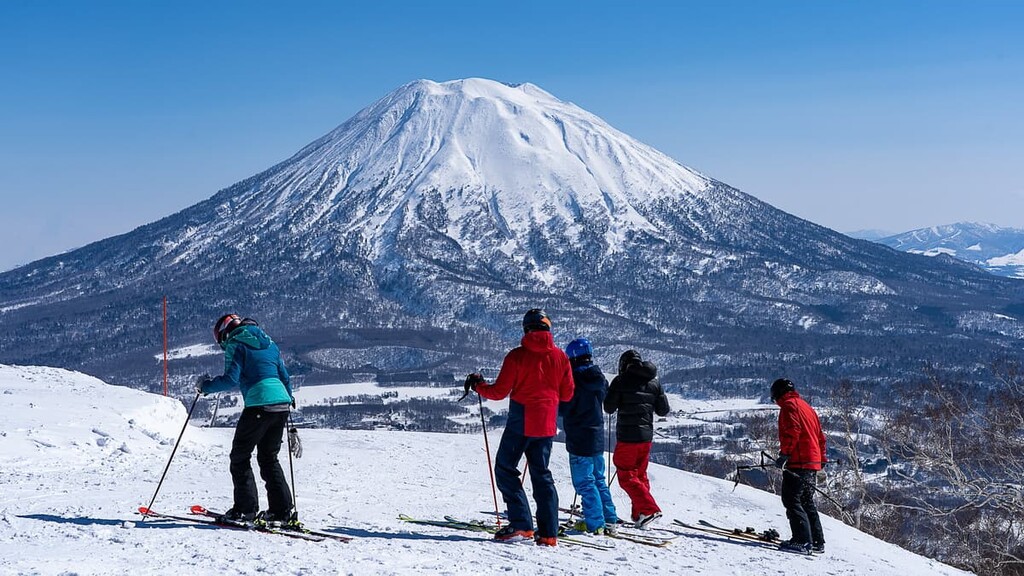
The town of Niseko itself is a major winter destination, with high-end hotels and resorts. It’s also a jumping-off point for adventures in the Hokkaido backcountry.
Rusutsu is a resort famous for its excellent-quality powder snow and tree skiing. The resort is also great for families because it features snow tubing, a large ski school, and a base “mall” area.
While it’s more low-key than Niseko or Rusutsu, Furano is another leading Hokkaido ski resort known for its snow and challenging terrain.
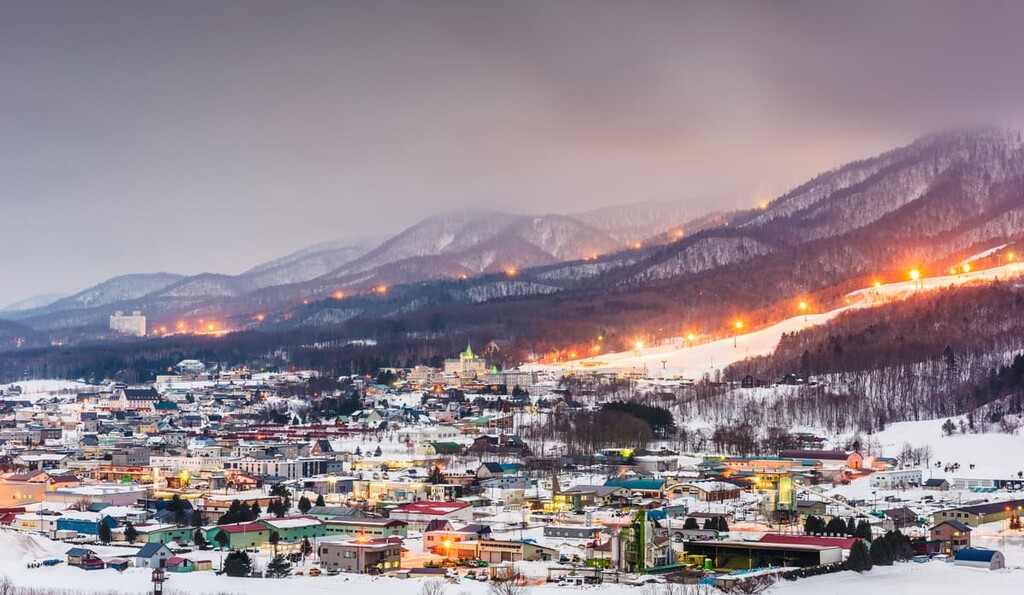
This is one of the easiest mountains to access from Sapporo, and it’s reachable by bus and train. The mountain, which was the site of the 1972 winter Olympics, is made up of two smaller areas.
In the wintertime, the ropeway on Mt. Asahi opens to skiers and snowboarders, offering an unrivaled big mountain experience. This isn’t a resort—there’s minimal signage and the terrain is mostly off-piste, backcountry runs as opposed to designated trails, but for dedicated powder hounds, Asahidake is an amazing experience.
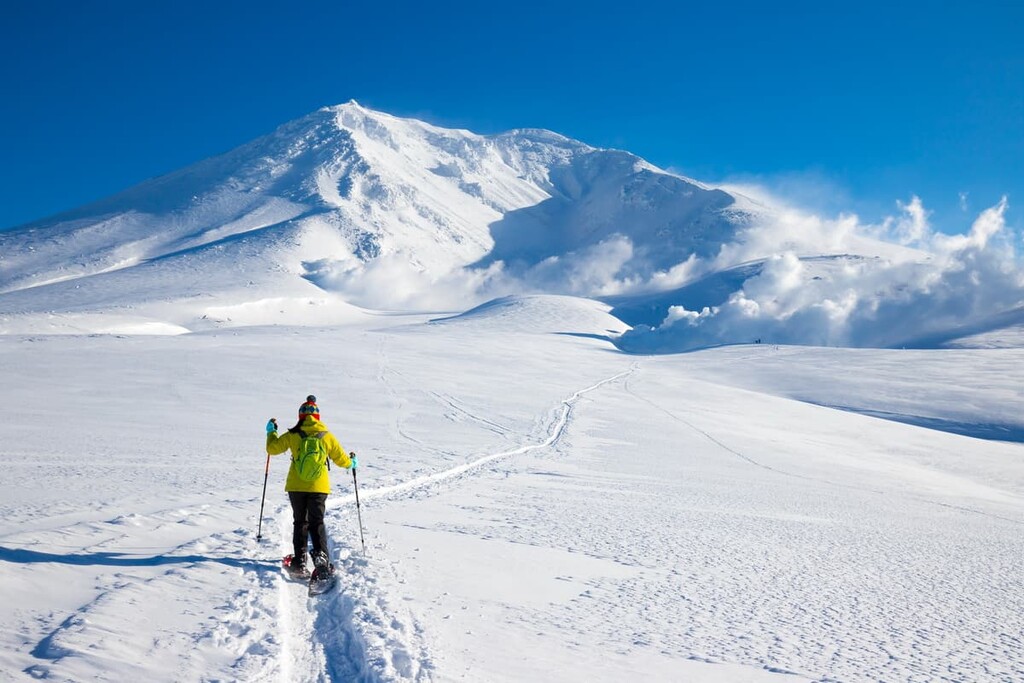
Like Asahidake, Kurodake is a minimalist ropeway “resort” with some unusually steep terrain for Hokkaido .
While the ropeways allow access to exceptional terrain, skiers and riders should be aware that both the Kurodake and Asahidake ropeways are frequently shut down due to bad weather.
Looking for a place to stay during your trip to Hokkaido? Here are some of the best cities and towns to check out:
Sapporo is Hokkaido’s capital and largest city. While it’s known for being more laid-back than larger Honshu cities like Tokyo or Osaka, there’s still plenty to see and do here.
In addition to excellent food and nightlife, Sapporo is home to a major winter snow and ice festival and Japan’s only beer museum. It’s also one of Japan’s newest major cities, having been officially founded in 1868.
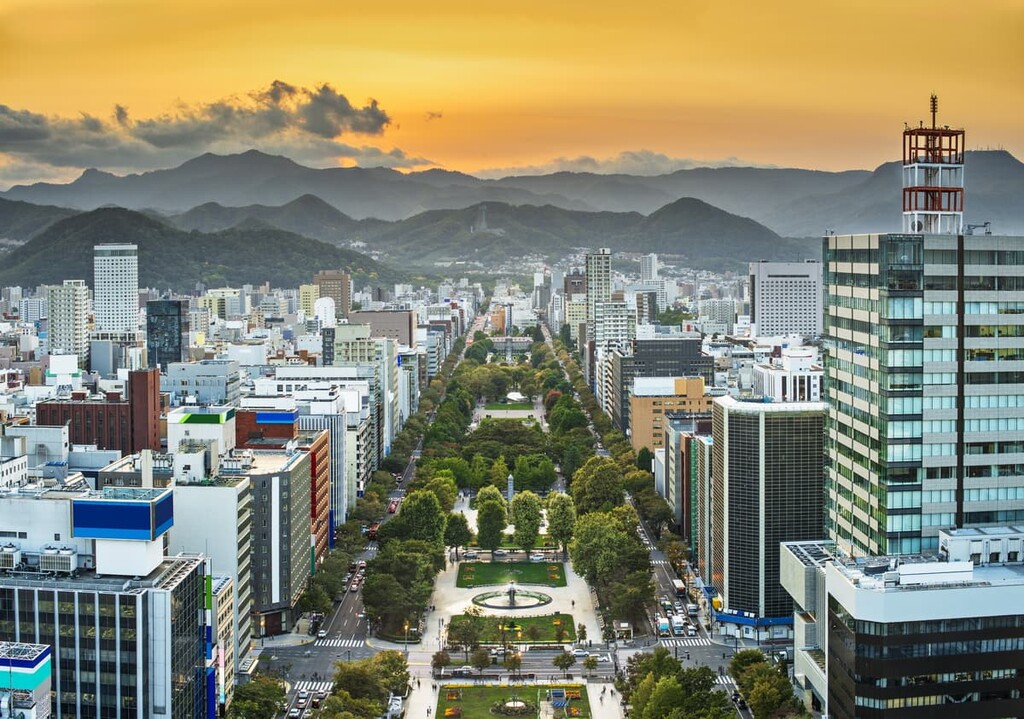
With only about 330,000 people to Sapporo’s 1.9 million, Asahikawa is the second-largest city in Hokkaido. It’s located in the north-central part of the island, surrounded by mountains and hills. Major attractions include the town’s own winter festival, the Asahiyama Zoo, and the local Asahikawa-style ramen.
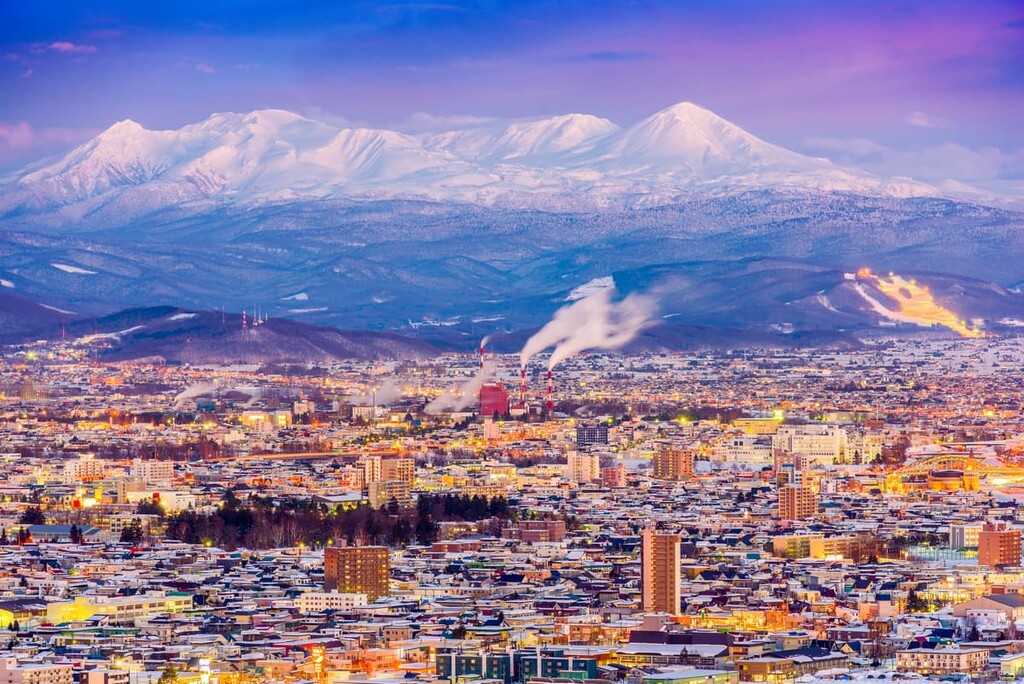
At the southern tip of Hokkaido, facing Honshu across the Tsugaru Strait is Hakodate, a city of about 250,000 people. Hakodate is currently the northern terminus of the Shinkansen bullet train, although the line is being extended to Sapporo with an expected completion sometime around 2030.
Surrounded by the ocean on three sides, Hakodate is a seafood lover’s paradise. The morning seafood market is a major tourist attraction.

Otaru is a small, historic city on the western coast of Hokkaido featuring a beautifully preserved canal. Nowadays, it draws tourists with its historic architecture, local artisanal goods, and saké and whisky distilleries.
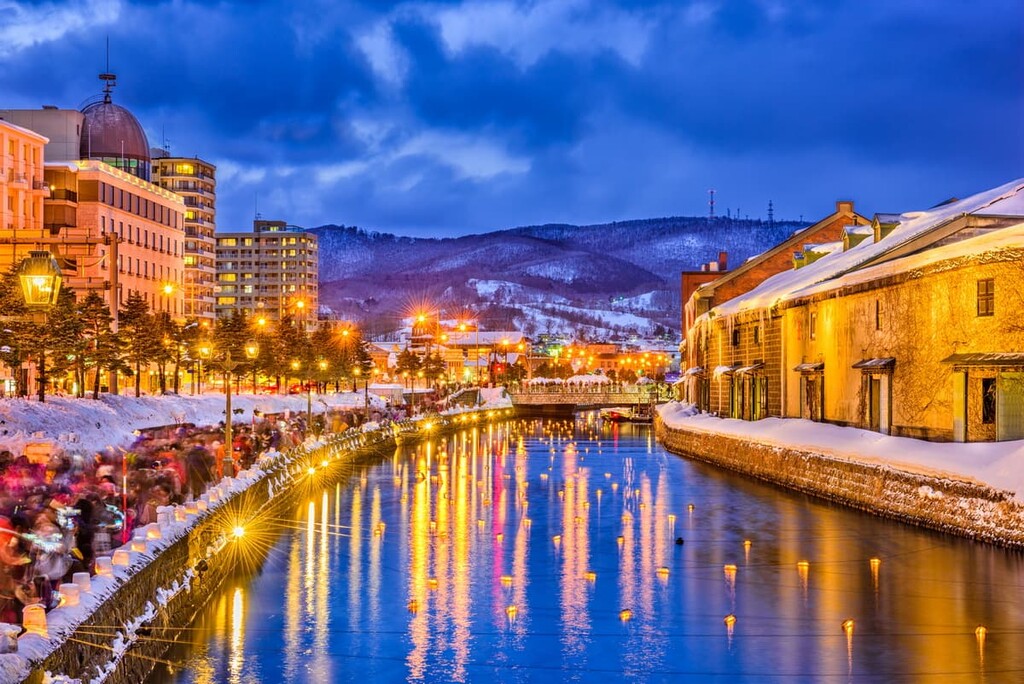
Explore Hokkaido with the PeakVisor 3D Map and identify its summits.








ja100
ultra
volcano
japan-ultras
